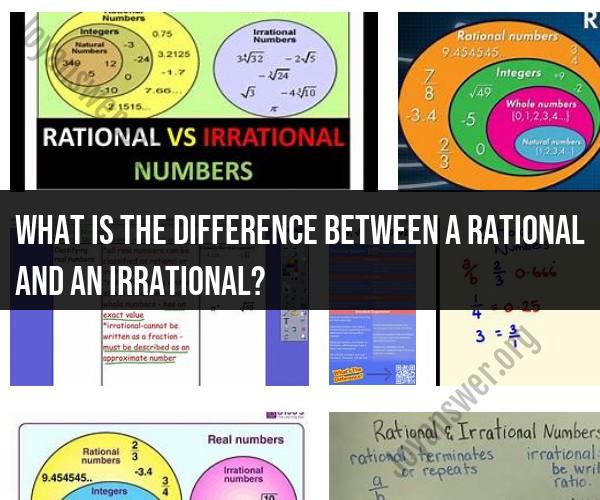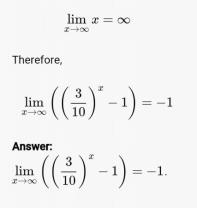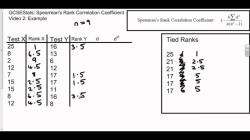What is the difference between a rational and an irrational?
Rational and irrational numbers are two distinct types of real numbers, and the key difference between them lies in how they can be expressed and whether their decimal representations are finite or non-repeating:
Rational Numbers:
- Definition: Rational numbers are numbers that can be expressed as the ratio (quotient) of two integers, where the denominator is not zero.
- Decimal Representation: Rational numbers either have finite decimal representations or repeating (periodic) decimal representations. For example, 1/2 is a rational number with a finite decimal representation of 0.5, and 1/3 is a rational number with a repeating decimal representation of 0.333....
- Examples: Common examples of rational numbers include integers (e.g., 5, -3), fractions (e.g., 2/7, -4/9), and terminating decimals (e.g., 0.25, 1.6).
Irrational Numbers:
- Definition: Irrational numbers are numbers that cannot be expressed as the ratio of two integers. In other words, their decimal representations neither terminate nor repeat.
- Decimal Representation: Irrational numbers have non-repeating, non-terminating decimal representations. These decimals go on forever without a repeating pattern. For example, √2 is an irrational number with a decimal representation of approximately 1.414213562373095..., and π (pi) is another irrational number with a decimal representation of approximately 3.141592653589793....
- Examples: Common examples of irrational numbers include the square root of non-perfect squares (e.g., √2, √7), the mathematical constant π (pi), and the mathematical constant e (the base of the natural logarithm).
In summary, the key difference between rational and irrational numbers is that rational numbers can be expressed as fractions of two integers and have either finite or repeating decimal representations, whereas irrational numbers cannot be expressed as fractions of integers and have non-repeating, non-terminating decimal representations.
Rational vs. Irrational: Key Differences in Numbers
Rational and irrational numbers are two different types of real numbers. Rational numbers are numbers that can be expressed as a fraction of two integers, while irrational numbers are numbers that cannot be expressed as a fraction of two integers.
Here is a table that summarizes the key differences between rational and irrational numbers:
| Characteristic | Rational numbers | Irrational numbers |
|---|---|---|
| Definition | Can be expressed as a fraction of two integers | Cannot be expressed as a fraction of two integers |
| Examples | 1/2, 3/4, 5/6, -1/3, 100/1000 | √2, π, e, φ |
| Decimal expansion | Terminates or repeats | Never-ending and non-repeating |
| Properties | Can be added, subtracted, multiplied, and divided | Can be added, subtracted, multiplied, and divided, but some operations may result in irrational numbers |
Distinguishing Rational and Irrational Numbers
One way to distinguish between rational and irrational numbers is to look at their decimal expansions. Rational numbers have decimal expansions that either terminate or repeat. For example, the decimal expansion of the rational number 1/2 is 0.5, and the decimal expansion of the rational number 3/4 is 0.75.
Irrational numbers, on the other hand, have decimal expansions that are never-ending and non-repeating. For example, the decimal expansion of the irrational number √2 is 1.41421356..., and the decimal expansion of the irrational number π is 3.14159265358979323846...
Another way to distinguish between rational and irrational numbers is to use mathematical proofs. There are a number of different proofs that can be used to show that certain numbers are irrational. For example, there is a proof that shows that √2 is irrational, and there is a proof that shows that π is irrational.
Numerical Classification: Rationality and Irrationality Explained
Rational and irrational numbers are two important classes of real numbers. Rational numbers are the numbers that we use most often in everyday life, such as the numbers 1, 2, 3, 4, and so on. Irrational numbers are less common, but they are still important in mathematics and science.
Rational numbers are used in many different areas of mathematics, such as arithmetic, algebra, and geometry. Irrational numbers are also used in many different areas of mathematics, such as trigonometry, calculus, and number theory.
Rational and irrational numbers are both important parts of the real number system. They are used in many different areas of mathematics and science, and they help us to understand the world around us.












